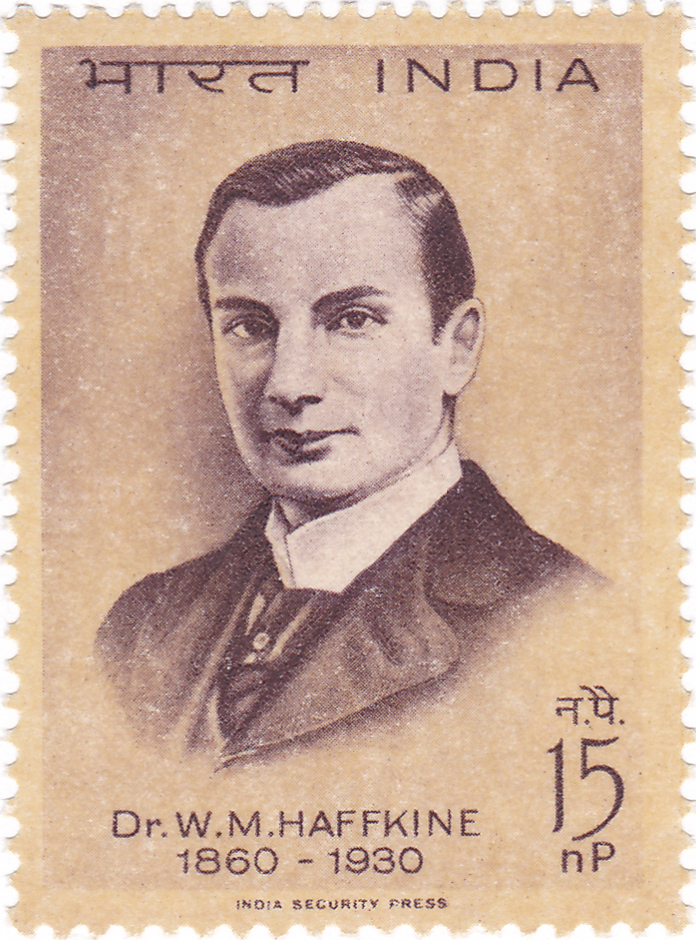|
Cholera Vaccine
A cholera vaccine is a vaccine that is effective at reducing the risk of contracting cholera. The recommended cholera vaccines are administered orally to elicit local immune responses in the gut, where the intestinal cells produce antibodies against ''Vibrio cholerae'', the bacteria responsible for the illness. This immune response was poorly achieved with the injectable vaccines that were used until the 1970s. The first effective oral cholera vaccine was Dukoral, developed in Sweden in the 1980s. For the first six months after vaccination it provides about 85% protection, which decreases to approximately 60% during the first two years. When enough of the population is immunized, it may protect those who have not been immunized thereby increasing the total protective impact to more than 90 % (known as herd immunity). The World Health Organization (WHO) recommends the use of three oral cholera vaccines – Dukoral, Shanchol, and Euvichol-Plus – in combination with other mea ... [...More Info...] [...Related Items...] OR: [Wikipedia] [Google] [Baidu] |
Vibrio Cholerae
''Vibrio cholerae'' is a species of Gram-negative bacteria, Gram-negative, Facultative anaerobic organism, facultative anaerobe and Vibrio, comma-shaped bacteria. The bacteria naturally live in Brackish water, brackish or saltwater where they attach themselves easily to the chitin-containing shells of crabs, shrimp, and other shellfish. Some strains of ''V. cholerae'' are pathogenic to humans and cause a deadly disease called cholera, which can be derived from the consumption of undercooked or raw marine life species or drinking contaminated water. ''V. cholerae'' was first described by Félix-Archimède Pouchet in 1849 as some kind of protozoa. Filippo Pacini correctly identified it as a bacterium and from him, the scientific name is adopted. The bacterium as the cause of cholera was discovered by Robert Koch in 1884. Sambhu Nath De isolated the cholera toxin and demonstrated the toxin as the cause of cholera in 1959. The bacterium has a flagellum (a tail like structure) at one ... [...More Info...] [...Related Items...] OR: [Wikipedia] [Google] [Baidu] |
Serotype
A serotype or serovar is a distinct variation within a species of bacteria or virus or among immune cells of different individuals. These microorganisms, viruses, or Cell (biology), cells are classified together based on their shared reactivity between their surface antigens and a particular antiserum, allowing the classification of organisms to a Infraspecific name, level below the species. A group of serovars with common antigens is called a serogroup or sometimes ''serocomplex''. Serotyping often plays an essential role in determining species and subspecies. The ''Salmonella'' genus of bacteria, for example, has been determined to have over 2600 serotypes. ''Vibrio cholerae'', the species of bacteria that causes cholera, has over 200 serotypes, based on cell antigens. Only two of them have been observed to produce the potent enterotoxin that results in cholera: O1 and O139. Serotypes were discovered in hemolytic streptococci by the American microbiologist Rebecca Lancefield i ... [...More Info...] [...Related Items...] OR: [Wikipedia] [Google] [Baidu] |
Centers For Disease Control And Prevention
The Centers for Disease Control and Prevention (CDC) is the National public health institutes, national public health agency of the United States. It is a Federal agencies of the United States, United States federal agency under the United States Department of Health and Human Services, Department of Health and Human Services (HHS), and is headquartered in Atlanta, Georgia. The CDC's current nominee for director is Susan Monarez. She became acting director on January 23, 2025, but stepped down on March 24, 2025 when nominated for the director position. On May 14, 2025, Robert F. Kennedy Jr. stated that lawyer Matthew Buzzelli is acting CDC director. However, the CDC web site does not state the acting director's name. The agency's main goal is the protection of public health and safety through the control and prevention of disease, injury, and disability in the US and worldwide. The CDC focuses national attention on developing and applying disease control and prevention. It e ... [...More Info...] [...Related Items...] OR: [Wikipedia] [Google] [Baidu] |
Wilhelm Kolle
Wilhelm Kolle (born 2 November 1868 in Lerbach, Osterode am Harz, Lerbach near Osterode am Harz, died 10 May 1935) was a German bacteriologist and hygienist. He served as the second director of the Paul Ehrlich Institute, Royal Institute for Experimental Therapy, succeeding its founder, the Nobel laureate Paul Ehrlich. He was also the original author, with Heinrich Hetsch, of the famous book ''Experimental Bacteriology'', one of the most authoritative works in microbiology in the first half of the 20th century. Following studies of medicine at the universities of University of Göttingen, Göttingen, University of Halle, Halle and University of Würzburg, Würzburg, he became an assistant to Robert Koch at the ''Institut für Infektionskrankheiten'' (Institute for Infectious Diseases) in Berlin (1893–97). In 1897–98 he performed research of rinderpest and leprosy in South Africa, and in 1900, on behalf of the Egyptian government, studied rinderpest in Sudan. In 1901 he became ... [...More Info...] [...Related Items...] OR: [Wikipedia] [Google] [Baidu] |
Side Effect
In medicine, a side effect is an effect of the use of a medicinal drug or other treatment, usually adverse but sometimes beneficial, that is unintended. Herbal and traditional medicines also have side effects. A drug or procedure usually used for a specific effect may be used specifically because of a beneficial side-effect; this is termed " off-label use" until such use is approved. For instance, X-rays have long been used as an imaging technique; the discovery of their oncolytic capability led to their use in radiotherapy for ablation of malignant tumours. Frequency of side effects The World Health Organization and other health organisations characterise the probability of experiencing side effects as: * Very common, ≥ 1⁄10 * Common (frequent), 1⁄10 to 1⁄100 * Uncommon (infrequent), 1⁄100 to 1⁄1000 * Rare, 1⁄1000 to 1⁄10000 * Very rare, < 1⁄10000 The |
Waldemar Haffkine
Waldemar Mordechai Wolff Haffkine , born Vladimir Aronovich (Markus-Volf) Khavkin (; 15 March 1860 – 26 October 1930) was a Russian-French bacteriologist known for his pioneering work in vaccines. Haffkine was educated at the Imperial Novorossiya University and later emigrated first to Switzerland, then to France, working at the Pasteur Institute in Paris, where he developed a cholera vaccine that he tried out successfully in India. He is recognized as the first microbiologist who developed and used vaccines against cholera and bubonic plague. He tested the vaccines on himself. Joseph Lister, named him "a saviour of humanity". He was appointed Companion of the Order of the Indian Empire (CIE) in Queen Victoria's 1897 Diamond Jubilee Honours. At that time ''The Jewish Chronicle'' noted "a Ukraine Jew, trained in the schools of European science, saves the lives of Hindus and Mohammedans and is decorated by the descendant of William the Conqueror and Alfred the Great." He n ... [...More Info...] [...Related Items...] OR: [Wikipedia] [Google] [Baidu] |
Jaume Ferran I Clua
''Jaime Ferran i Clua'' (Corbera d'Ebre, 1851 – Barcelona 1929) was a Spanish- French bacteriologist and sanitarian , contemporary of Robert Koch, and said by his fellows to have made some of the discoveries attributed to Koch. As early as 1885, he wrote on immunization against cholera. In 1893, his work on this subject was translated into French with the title ''L'Inoculation préventive contre le Cholera''. Tuberculosis is another disease in which Ferran was always deeply interested. Some of his ideas on the transmission and virulence of tuberculosis are revolutionary. He died in 1929 and was buried in Montjuïc Cemetery, Barcelona Barcelona ( ; ; ) is a city on the northeastern coast of Spain. It is the capital and largest city of the autonomous community of Catalonia, as well as the second-most populous municipality of Spain. With a population of 1.6 million within c .... Bibliography * U. TRUJILLANO, ''Ferrán, su obra sanitaria'', Madrid 1945; * G. ... [...More Info...] [...Related Items...] OR: [Wikipedia] [Google] [Baidu] |
Louis Pasteur
Louis Pasteur (, ; 27 December 1822 – 28 September 1895) was a French chemist, pharmacist, and microbiologist renowned for his discoveries of the principles of vaccination, Fermentation, microbial fermentation, and pasteurization, the last of which was named after him. His research in chemistry led to remarkable breakthroughs in the understanding of the causes and preventions of diseases, which laid down the foundations of hygiene, public health and much of modern medicine. Pasteur's works are credited with saving millions of lives through the developments of vaccines for rabies vaccine, rabies and anthrax vaccine, anthrax. He is regarded as one of the founders of modern bacteriology and has been honored as the "father of bacteriology" and the "father of microbiology" (together with Robert Koch; the latter epithet also attributed to Antonie van Leeuwenhoek). Pasteur was responsible for disproving the doctrine of spontaneous generation. Under the auspices of the French Aca ... [...More Info...] [...Related Items...] OR: [Wikipedia] [Google] [Baidu] |
ASC Leiden - Coutinho Collection - G 01 - Ziguinchor, Senegal - Cholera Vaccinations By Guinean Nurse - 1973
ASC may refer to: Educational institutions * Anglican Schools Commission, Australia * Andres Soriano Colleges of Bislig, located in Surigao del Sur, Philippines * Agnes Scott College, Decatur, Georgia * Alfred State College, Alfred, New York Organizations Australia * Australian Securities Commission, now Australian Securities and Investments Commission (ASIC) * Australian Singing Competition * Australian Sports Commission * ASC Pty Ltd (former Australian Submarine Corporation), a naval shipbuilder * ASC Shipbuilding established by ASC Pty Ltd but now a subsidiary of BAE Systems Australia Canada * Advertising Standards Canada * ''Agence spatiale canadienne'', the Canadian Space Agency * Alberta Securities Commission * Association des Scouts du Canada United Kingdom * Amalgamated Society of Core Makers of Great Britain and Ireland, former trade union * Army Service Corps, the name of the Royal Army Service Corps between 1870 and 1918 * Association of Speakers Clubs, a group ... [...More Info...] [...Related Items...] OR: [Wikipedia] [Google] [Baidu] |
Cholera Toxin
Cholera toxin (also known as choleragen, CTX, CTx and CT) is a potent enterotoxin produced by the bacterium Vibrio cholerae which causes severe watery diarrhea and dehydration that define cholera infections. The toxin is a member of the heat-labile enterotoxin family, and exists as an AB5 multimeric toxin with one enzymatically active A subunit and five receptor-binding B subunits that facilitate host cell entry. History The cholera toxin is the causative pathogenic agent of the ancient disease cholera, thought to have emerged in the Ganges Delta. For centuries the toxin remained confined to this region, but 19th-century globalisation spread it worldwide through the course of seven subsequent pandemics. When cholera arrived in London in 1832, its transmission was poorly understood, with many blaming miasma. Physician, John Snow (1813-1858) was an advocate of water contamination as the cause of its spread - famously ending an outbreak by removing a public water pump handle in ... [...More Info...] [...Related Items...] OR: [Wikipedia] [Google] [Baidu] |
Inactivated Vaccine
An inactivated vaccine (or killed vaccine) is a type of vaccine that contains pathogens (such as virus or bacteria) that have been killed or rendered inactive, so they cannot replicate or cause disease. In contrast, live vaccines use pathogens that are still alive (but are almost always attenuated, that is, weakened). Pathogens for inactivated vaccines are grown under controlled conditions and are killed as a means to reduce infectivity and thus prevent infection from the vaccine. Inactivated vaccines were first developed in the late 1800s and early 1900s for cholera, plague, and typhoid. In 1897, Japanese scientists developed an inactivated vaccine for the bubonic plague. In the 1950s, Jonas Salk created an inactivated vaccine for the poliovirus, creating the first vaccine that was both safe and effective against polio. Today, inactivated vaccines exist for many pathogens, including influenza, polio (IPV), rabies, hepatitis A, CoronaVac, Covaxin and pertussis. Because ... [...More Info...] [...Related Items...] OR: [Wikipedia] [Google] [Baidu] |








